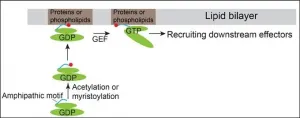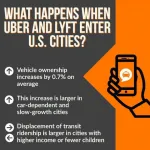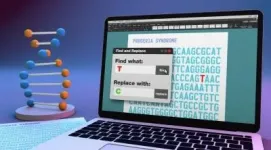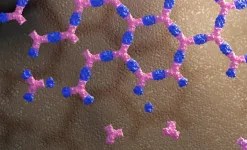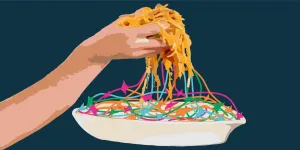Physicists observe competition between magnetic orders
Nature study: Research team at the University of Bonn gains insights into novel quantum phenomena
2021-01-06
(Press-News.org) They are as thin as a hair, only a hundred thousand times thinner--so-called two-dimensional materials, consisting of a single layer of atoms, have been booming in research for years. They became known to a wider audience when two Russian-British scientists were awarded the Nobel Prize in Physics in 2010 for the discovery of graphene, a building block of graphite. The special feature of such materials is that they possess novel properties that can only be explained with the help of the laws of quantum mechanics and that may be relevant for enhanced technologies. Researchers at the University of Bonn (Germany) have now used ultracold atoms to gain new insights into previously unknown quantum phenomena. They found out that the magnetic orders between two coupled thin films of atoms compete with each other. The study has been published in the journal Nature.
Quantum systems realize very unique states of matter originating from the world of nanostructures. They facilitate a wide variety of new technological applications, e.g. contributing to secure data encryption, introducing ever smaller and faster technical devices and even enabling the development of a quantum computer. In the future, such a computer could solve problems which conventional computers cannot solve at all or only over a long period of time.
How unusual quantum phenomena arise is still far from being fully understood. To shed light on this, a team of physicists led by Prof. Michael Köhl at the Matter and Light for Quantum Computing Cluster of Excellence at the University of Bonn are using so-called quantum simulators, which mimic the interaction of several quantum particles--something that cannot be done with conventional methods. Even state-of-the-art computer models cannot calculate complex processes such as magnetism and electricity down to the last detail.
Ultracold atoms simulate solids
The simulator used by the scientists consists of ultracold atoms--ultracold because their temperature is only a millionth of a degree above absolute zero. The atoms are cooled down using lasers and magnetic fields. The atoms are located in optical lattices, i.e. standing waves formed by superimposing laser beams. This way, the atoms simulate the behavior of electrons in a solid state. The experimental setup allows the scientists to perform a wide variety of experiments without external modifications.
Within the quantum simulator, the scientists have, for the first time, succeeded in measuring the magnetic correlations of exactly two coupled layers of a crystal lattice. "Via the strength of this coupling, we were able to rotate the direction in which magnetism forms by 90 degrees--without changing the material in any other way," first authors Nicola Wurz and Marcell Gall, doctoral students in Michael Köhl's research group, explain.
To study the distribution of atoms in the optical lattice, the physicists used a high-resolution microscope with which they were able to measure magnetic correlations between the individual lattice layers. In this way, they investigated the magnetic order, i.e. the mutual alignment of the atomic magnetic moments in the simulated solid state. They observed that the magnetic order between layers competed with the original order within a single layer, concluding that the more strongly layers were coupled, the more strongly correlations formed between the layers. At the same time, correlations within individual layers were reduced.
The new results make it possible to better understand the magnetism propagating in the coupled layer systems at the microscopic level. In the future, the findings are to help make predictions about material properties and achieve new functionalities of solids, among other things. Since, for example, high-temperature superconductivity is closely linked to magnetic couplings, the new findings could, in the long run, contribute to the development of new technologies based on such superconductors.
The Matter and Light for Quantum Computing (ML4Q) Cluster of Excellence
The Matter and Light for Quantum Computing (ML4Q) Cluster of Excellence is a research cooperation by the universities of Cologne, Aachen and Bonn, as well as the Forschungszentrum Jülich. It is funded as part of the Excellence Strategy of the German federal and state governments. The aim of ML4Q is to develop new computing and networking architectures using the principles of quantum mechanics. ML4Q builds on and extends the complementary expertise in the three key research fields: solid-state physics, quantum optics, and quantum information science.
The Cluster of Excellence is embedded in the Transdisciplinary Research Area "Building Blocks of Matter and Fundamental Interactions" at the University of Bonn. In six different TRAs, scientists from a wide range of faculties and disciplines come together to work on future-relevant research topics.
INFORMATION:
Publication: Marcell Gall*, Nicola Wurz*, Jens Samland, Chun Fai Chan, Michael Köhl: Competing magnetic orders in a bilayer Hubbard model with ultracold atoms. Nature, DOI: 10.1038/s41586-020-03058-x *Equal contribution
[Attachments] See images for this press release:
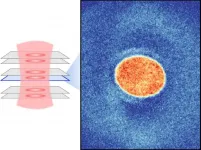
ELSE PRESS RELEASES FROM THIS DATE:
2021-01-06
Starting as a single cell, organisms undergo millions of generations of divisions to ultimately generate the bones, heart, brain and other components that make up a living being. The mainspring within this intricate process is the transfer of DNA through each subsequent cell split within discrete packets called chromosomes.
It's critical that all chromosomes are duplicated and precisely distributed through every generation of cell division. If the inherited chromosome components are altered, even slightly, birth defects and certain cancers can result.
A new study published in the journal Science by postdoctoral scholar Pablo Lara-Gonzalez, Division of Biological Sciences Professor Arshad Desai and their colleagues addresses ...
2021-01-06
Irvine, Calif., Jan. 6, 2021-- In the United States, Black, Latino and low-income communities have historically lacked nearby access to pharmacy services. To provide the first record of these "pharmacy deserts" in Los Angeles County, a University of California, Irvine study identified communities where the nearest pharmacy was at least one mile away.
Unlike previous studies, this one describes pharmacy deserts in terms of social determinants of health - such as owning a vehicle, crime rates and poverty - to determine which communities have the greatest need for pharmacy access. Published in the Journal of Racial and Ethnic Health Disparities, ...
2021-01-06
The small GTPases of the ADP-ribosylation factor (Arf) family are key initiators of various physiological processes including secretion, endocytosis, phagocytosis and signal transduction. Arf family proteins function to mediate recruitment of cytosolic effectors to specific subcellular compartments. This process facilitates Arf effectors to perform cargo recognition, lipid modification or other cellular functions. Blocking the activities of Arf family proteins inhibits secretion of important molecules from the cell and also inhibits cellular uptake of nutrients. Defects in Arfs or their regulatory proteins are related to various inherited diseases, including X-linked intellectual disability (XLID), Joubert syndrome, Bardet-Biedl syndrome and cilia dysfunction. Thus, studying molecular ...
2021-01-06
When ridesourcing companies Uber and Lyft show up in urban areas, vehicle registrations per capita increase by 0.7% on average, increasing even more in car-dependent cities. Researchers reporting in the journal iScience on January 6 made this discovery by analyzing data from major US cities between 2011 to 2017, comparing trends in cities where Uber and Lyft entered with those where they didn't. They also found that Uber and Lyft displace transit more in cities with higher income and fewer children.
"I would have expected people to own fewer vehicles once they gain access to this alternative transportation mode," says Jeremy Michalek, a professor of engineering and public policy at Carnegie Mellon University and co-author ...
2021-01-06
Researchers have successfully used a DNA-editing technique to extend the lifespan of mice with the genetic variation associated with progeria, a rare genetic disease that causes extreme premature aging in children and can significantly shorten their life expectancy. The study was published in the journal Nature, and was a collaboration between the National Human Genome Research Institute (NHGRI), part of the National Institutes of Health; Broad Institute of Harvard and MIT, Boston; and the Vanderbilt University Medical Center, Nashville, Tennessee.?
DNA is made up of four chemical bases -- A, C, G and T. Progeria, which is also known as Hutchinson-Gilford ...
2021-01-06
A new class of protein material that interacts with living cells without being absorbed by them can influence cell signaling, a new study shows. The material does this by binding and sequestering cell surface receptors.
The discovery could have far-reaching implications for stem cell research and enable the development of new materials designed to modulate the behavior of living systems.
The research, reported in the January 6 edition of Nature, was led by the Baker lab at the University of Washington School of Medicine and the Derivery lab at the Medical Research Council Laboratory of Molecular Biology in Cambridge, U.K. Their paper is titled, Design of Biologically Active Binary Protein 2D Materials.
Cells ...
2021-01-06
The westerlies--or westerly winds--play an important role in weather and climate both locally and on a global scale, by influencing precipitation patterns, impacting ocean circulation and steering tropical cyclones. So, finding a way to assess how they will change as the climate warms is crucial.
Typically, the westerlies blow from west to east across the planet's middle latitudes. But scientists have noticed that over the last several decades, these winds are changing, migrating poleward. Research suggests this is because of climate change. But, scientists have been debating whether the poleward movement of ...
2021-01-06
What The Study Did: The findings of this survey study suggest that simply providing maps with COVID-19 case information wasn't necessarily associated with improved public knowledge, risk perception or reported intent to adhere to health guidelines.
Authors: Angela Fagerlin, Ph.D., of the University of Utah in Salt Lake City, is the corresponding author.
To access the embargoed study: Visit our For The Media website at this link https://media.jamanetwork.com/
(doi:10.1001/jamanetworkopen.2020.33538)
Editor's Note: The article includes conflict of interest disclosures. Please see the article for additional ...
2021-01-06
What The Study Did: Changes in out-of-hospital cardiac arrests and fatalities in the Detroit area during the COVID-19 pandemic are compared with year-earlier events for the same period in this observational study.
Authors: Adrienne V. Nickles, M.P.H., of the Michigan Department of Health and Human Services in Lansing, is the corresponding author.
To access the embargoed study: Visit our For The Media website at this link https://media.jamanetwork.com/
(doi:10.1001/jamanetworkopen.2020.32331)
Editor's Note: The article includes conflict of interest disclosures. Please see the article for additional information, including other authors, author contributions and affiliations, conflict of interest and financial disclosures, and funding and support.
INFORMATION:
Media ...
2021-01-06
Writing, driving a screw or throwing darts are only some of the activities that demand a high level of skill. How the brain masters such exquisite movements has now been described in the journal "Nature" by a team of researchers at the University of Basel and the Friedrich Miescher Institute for Biomedical Research. A map of brainstem circuits reveals which neurons control the fine motor skills of the arm and hand.
Picking up a pen and writing our name or reaching for a fork to eat spaghetti with tomato sauce are things we take for granted. However, holding a pen properly or bringing spaghetti to the mouth without making a mess requires precise ...
LAST 30 PRESS RELEASES:
[Press-News.org] Physicists observe competition between magnetic orders
Nature study: Research team at the University of Bonn gains insights into novel quantum phenomena

